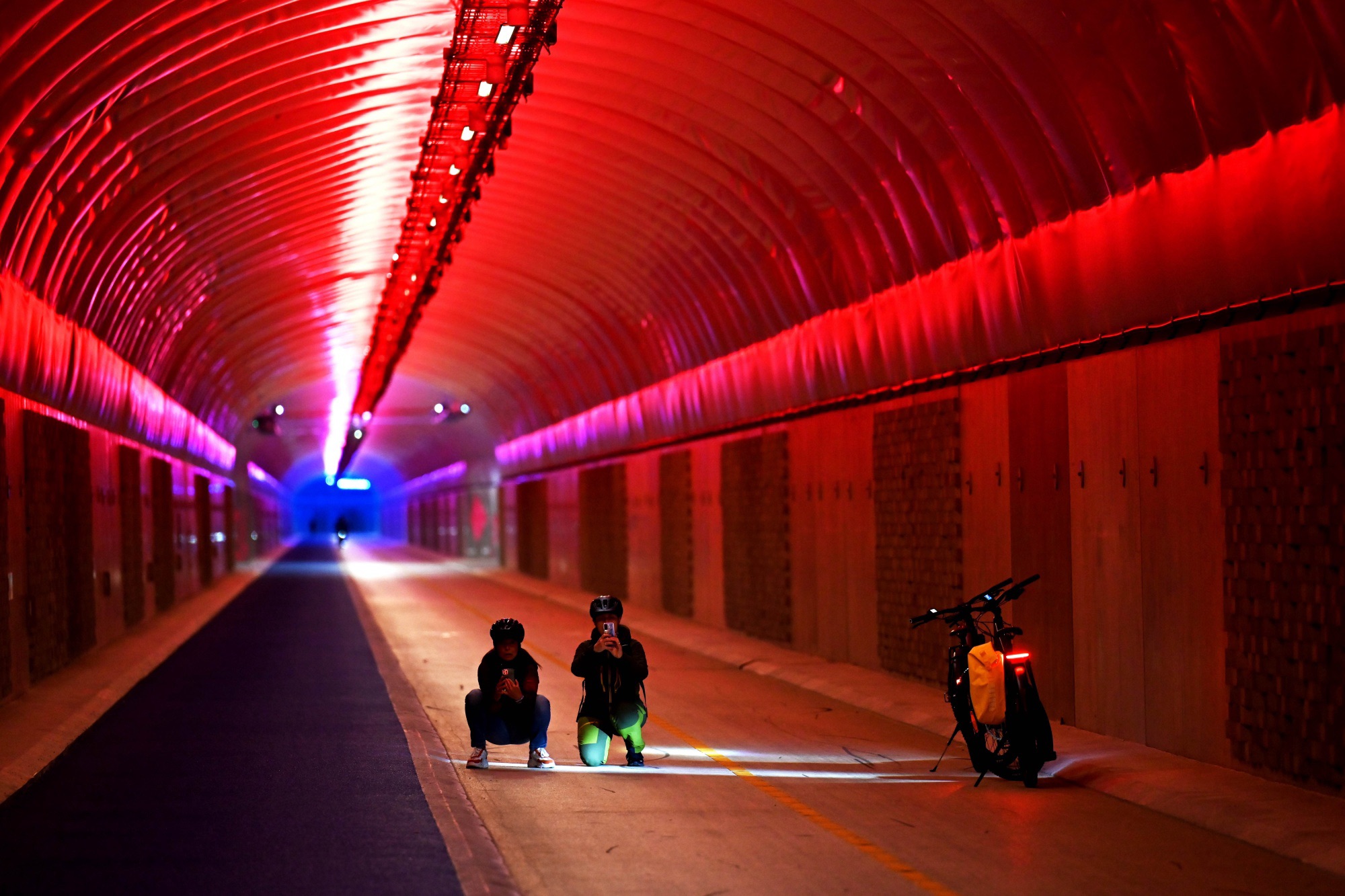This extraordinary tunnel, inaugurated in April of the previous year, represents a significant milestone in Norway’s efforts towards urban environmental sustainability. Specifically designed for pedestrians and cyclists, the 3,000-meter tunnel is the longest of its kind, connecting Bergen’s city center to Fyllingsdalen. A typical bike ride through it takes about 25 minutes.
It is celebrated as the highlight of Bergen’s new cycling route, which spans nearly 4.9 miles from the southern part of the city to the central area. The tunnel runs beneath the Lovstakken mountain and aligns with the new light rail line that began operation in November 2022. The opening weekend featured a cycling parade and various family-friendly running and cycling events, attracting participants of all ages, many of whom donned costumes for the celebration.
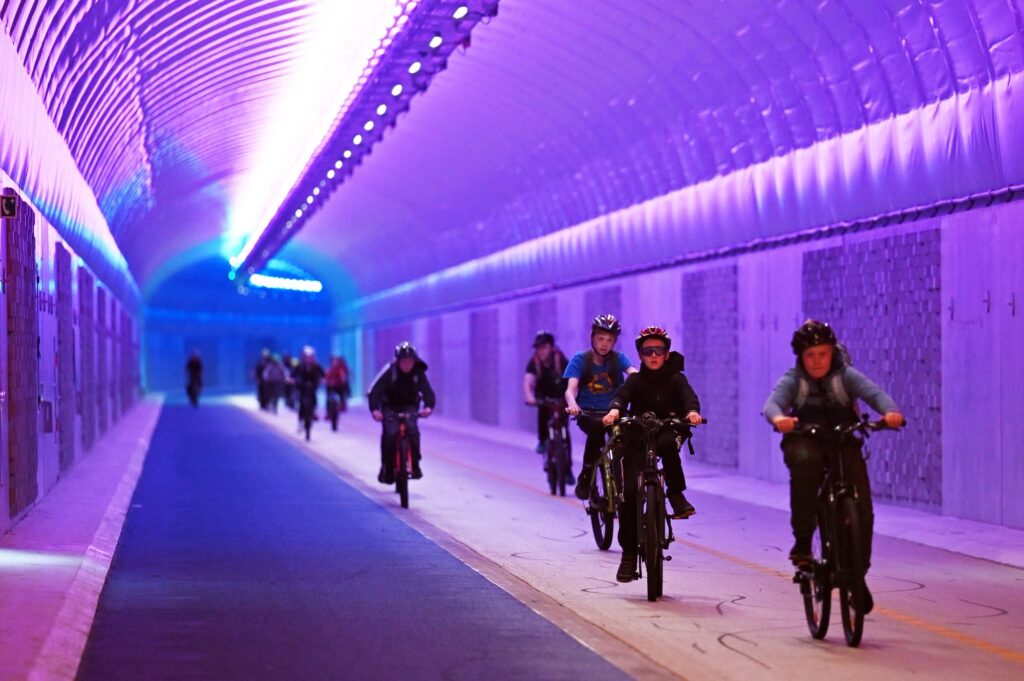
The tunnel has designated sections for cyclists and pedestrians, with pedestrians walking on a raised pathway made of blue rubberized concrete. Enhancements such as art installations, innovative lighting, seating areas, and a sundial at the midpoint make the journey more engaging. As one travels through, the tunnel changes colors every few hundred meters.
The sundial, painted in a rainbow palette, appears as a heart from the eastward approach and a spiral from the west.
Ingrid Fjeldstad, Bergen’s commissioner for climate, environment, and urban development, praised the tunnel’s central art, saying, “It makes the tunnel an exciting journey, ensuring that cycling remains interesting.”
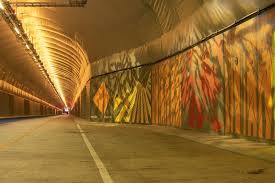
Before the tunnel’s construction, cyclists traveling between Fyllingsdalen and the city center had to either scale the 477-meter Løvstakken mountain, known as the ‘stack of leaves’, or navigate a congested roadway around it—neither of which were appealing options for residents.
The tunnel features two distinct pathways: a cycling lane and a raised walkway for pedestrians made from blue rubberized concrete. To enhance the experience, it includes artistic displays, dynamic lighting, seating areas, and a sundial at its midpoint. As cyclists move through the tunnel, they encounter a changing array of colors every few hundred meters.
The sundial is a vibrant display, appearing as a heart from the east and a spiral from the west.
Ingrid Fjeldstad, Bergen’s commissioner for climate, environment, and urban development, particularly appreciates the central art installation, stating, “It transforms the tunnel into an exhilarating experience, keeping cycling journeys from becoming monotonous.”
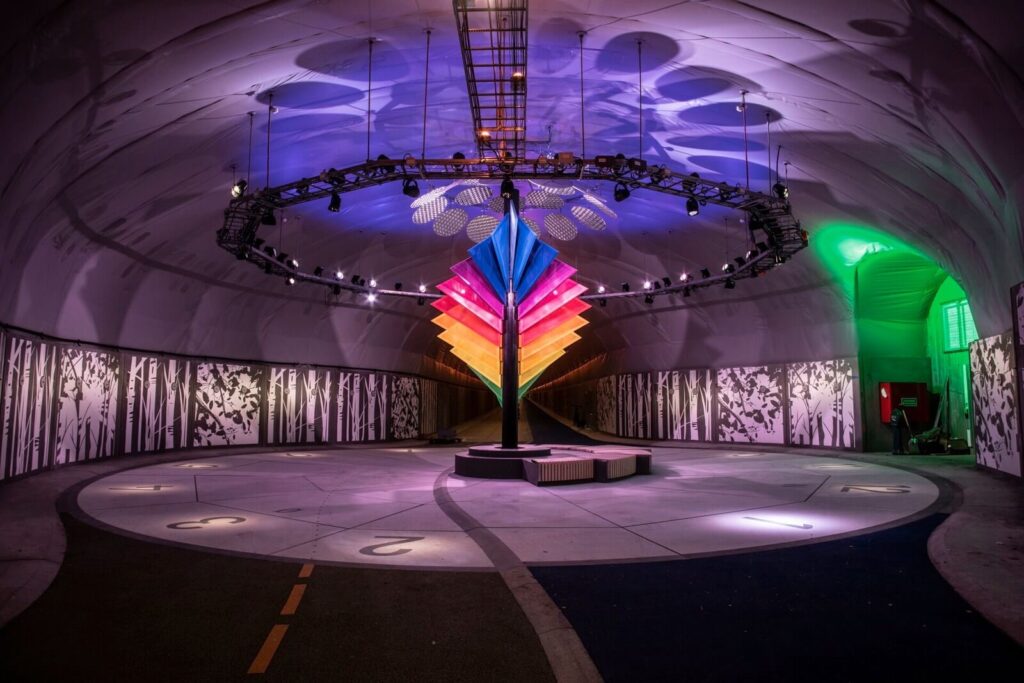
Before the tunnel was constructed, cyclists traveling from Fyllingsdalen to the city center faced two unappealing choices: either climb the 477-meter Løvstakken mountain, known as the ‘stack of leaves’, or navigate a congested road around it.
The new tunnel reduces the journey time from 40 minutes to 25 minutes and provides shelter from the region’s frequent rainstorms. Reports indicate that the project’s goal is to “provide attractive alternatives to car use, such as public transport, walking, and cycling, to prevent an increase in car traffic.”
The local Green Pledge aims to curb future car traffic growth with initiatives like improved public transport services, congestion charges, and wider sidewalks. Bergen has set an ambitious target of a 30% traffic reduction. Currently, over 80% of new cars sold in Norway are electric, the highest percentage globally.
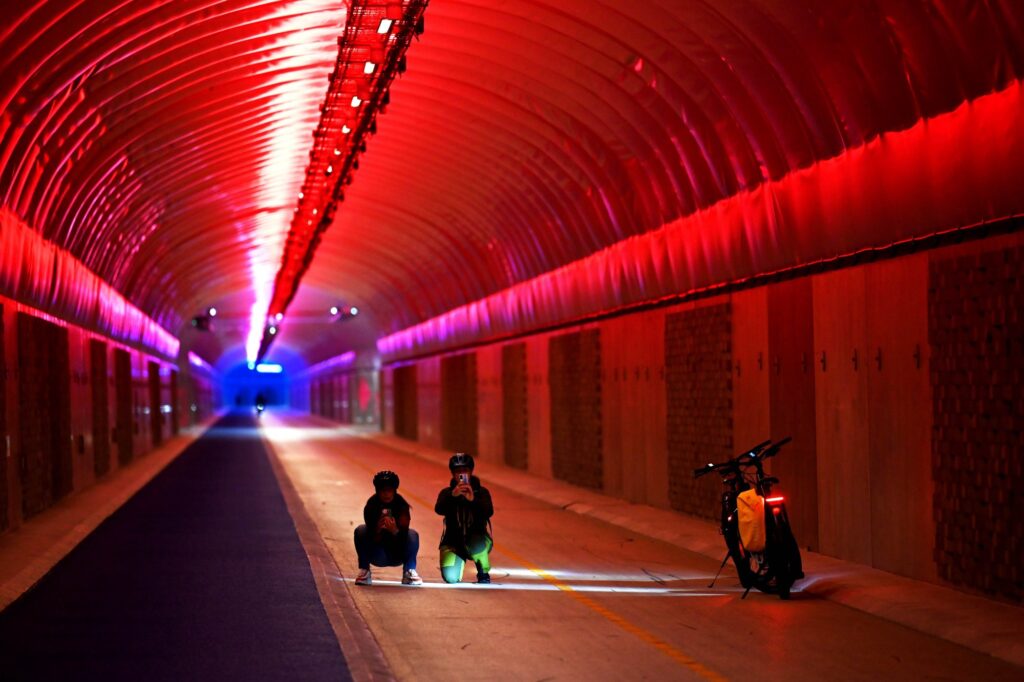
Einar Grieg, Bergen’s cycling coordinator, estimates that by 2040, the tunnel will be used by 2,600 cyclists daily. As of September 2023, the tunnel was already attracting 650 cyclists each day, along with significant numbers of pedestrians and joggers, a turnout that pleasantly surprised the officials.
“The number of pedestrians and joggers using the tunnel took us by surprise,” Grieg told Bloomberg. “It seems that many are using the tunnel for leisure or as a place to exercise. Sometimes, it even becomes a gathering spot for elderly people to take walks.”
However, there’s still room for improvement in the infrastructure. Currently, no similar path exists for cyclists coming from the north into the city, and the bike lanes in the city center are inadequate. Eivind Kvamm-Lichtenfeld, a local who regularly uses the tunnel, expressed his concerns to Bloomberg: “It’s illogical for the new bike path from Fyllingsdalen to end abruptly at the city center instead of continuing through it. This discontinuity discourages many from cycling because they are unsure how to complete their journey.”
In response, the city has pledged to improve its cycling infrastructure, with plans to expand bike lanes and increase the cycling mode share to 10% by 2030.
